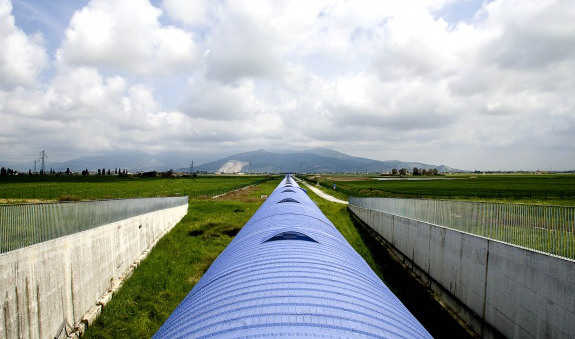 news version - A total of eleven gravitational wave events have been observed by the interferometers of the LIGO/Virgo collaboration, all described in detail in their first catalogue, recently published. From the analysis of the data collected during the first two observation periods of LIGO and Virgo, four other events emerged, compared to those previously announced, all generated by the fusion of binary black holes: GW170729, the most massive and distant gravitational wave source ever observed, GW170809, GW170818 and GW170823. During the first observation run (O1), from 12 September 2015 to 19 January 2016, three gravitational wave signals were detected from the fusion of black holes. The second observation run (O2), from 30 November 2016 to 25 August 2017, recorded gravitational waves emitted by the fusion of a binary neutron star system and a total of seven signals from the fusion of black holes. The new events also include GW170818, measured by all the three interferometers that form the global network of gravitational waves observatories, the two LIGO located in the United States in Livingston, Louisiana and Hanford, in the State of Washington, and the Virgo interferometer in Italy, in Cascina near Pisa. The position of the binary system, located 3.3 billion light years from Earth, was identified in the sky with an accuracy of 39 square degrees: the best location of a gravitational wave source, after the GW170817 neutron star fusion.The publication of this work summarises the discoveries made so far. The restart of the LIGO/Virgo network, is scheduled for next spring, following conclusion of work to upgrade the three interferometers, which will increase their ability to observe the sky and therefore their discovery potential.
news version - A total of eleven gravitational wave events have been observed by the interferometers of the LIGO/Virgo collaboration, all described in detail in their first catalogue, recently published. From the analysis of the data collected during the first two observation periods of LIGO and Virgo, four other events emerged, compared to those previously announced, all generated by the fusion of binary black holes: GW170729, the most massive and distant gravitational wave source ever observed, GW170809, GW170818 and GW170823. During the first observation run (O1), from 12 September 2015 to 19 January 2016, three gravitational wave signals were detected from the fusion of black holes. The second observation run (O2), from 30 November 2016 to 25 August 2017, recorded gravitational waves emitted by the fusion of a binary neutron star system and a total of seven signals from the fusion of black holes. The new events also include GW170818, measured by all the three interferometers that form the global network of gravitational waves observatories, the two LIGO located in the United States in Livingston, Louisiana and Hanford, in the State of Washington, and the Virgo interferometer in Italy, in Cascina near Pisa. The position of the binary system, located 3.3 billion light years from Earth, was identified in the sky with an accuracy of 39 square degrees: the best location of a gravitational wave source, after the GW170817 neutron star fusion.The publication of this work summarises the discoveries made so far. The restart of the LIGO/Virgo network, is scheduled for next spring, following conclusion of work to upgrade the three interferometers, which will increase their ability to observe the sky and therefore their discovery potential.






